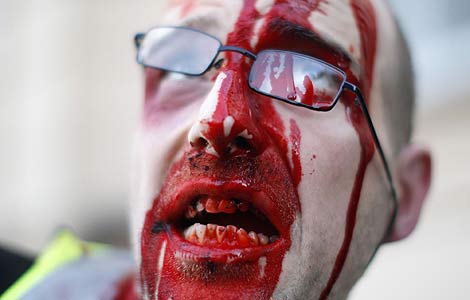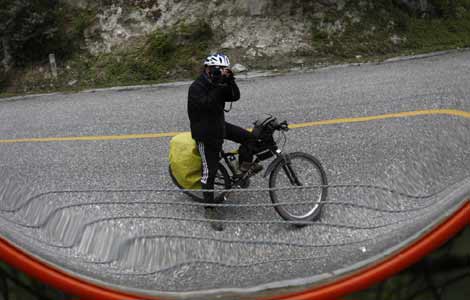Killing of US-born al-Qaida cleric stirs debate
Updated: 2011-10-02 06:58
(China Daily)
|
|||||||||
WASHINGTON - President Barack Obama steered America's war machine into uncharted territory on Friday when a US drone attacked a convoy in Yemen and killed two American citizens who had become central figures in al-Qaida.
It was believed to be the first instance in which a US citizen was tracked and executed based on secret intelligence and the president's say-so. And it raised major questions about the limitations of presidential power.
Anwar al-Awlaki, the target of the US drone attack, was one of the best-known al-Qaida figures after Osama bin Laden. American intelligence officials had linked him to two nearly catastrophic attacks on US-bound planes, an airliner on Christmas 2009 and cargo planes last year. The second American killed in the drone attack, Samir Kahn, was the editor of Inspire, a slick online magazine aimed at al-Qaida sympathizers in the West.
Late on Friday, two US officials said intelligence indicated that the top al-Qaida bomb-maker in Yemen also died in the strike.
Ibrahim al-Asiri is the bomb-maker linked to the bomb hidden in the underwear of a Nigerian man accused of trying to blow up a plane over Detroit on Christmas Day 2009.
The officials spoke on the condition of anonymity because al-Asiri's death has not officially been confirmed.
Authorities also believe he built the bombs that al-Qaida slipped into printers and shipped to the US last year in a nearly catastrophic attack.
Christopher Boucek, a scholar who studies Yemen and al-Qaida, said al-Asiri was so important to the organization that his death would "overshadow" the news of al-Awlaki and Khan.
In announcing al-Awlaki's death, Obama said, "Al-Qaida and its affiliates will find no safe haven anywhere in the world."
"Working with Yemen and our other allies and partners, we will be determined, we will be deliberate, we will be relentless, we will be resolute in our commitment to destroy terrorist networks that aim to kill Americans," he said.
Republicans and Democrats alike applauded the decision to launch the fatal assault.
"It's something we had to do," said Republican Representative Peter King, chairman of the House of Representatives Homeland Security Committee. "The president is showing leadership. The president is showing guts."
"It's legal," said Representative C.A. Dutch Ruppersberger, the ranking Democrat on the House Intelligence Committee. "It's legitimate, and we're taking out someone who has attempted to attack us on numerous occasions. And he was on that list."
That list is the roster of people the White House has authorized the CIA and Pentagon to kill or capture as terrorists. The evidence against them almost always is classified. Targets never know for sure they are on the list, though some surely wouldn't be surprised.
The list has included dozens of names, from little-known mid-level figures in the wilds of Pakistan to bin Laden, who was killed in his compound in a comfortable Pakistani suburb.
Before al-Awlaki, no American had been on the list.
But the legal process that led to his death was set in motion a decade ago. On Sept 17, 2001, President George W. Bush signed a presidential order authorizing the CIA to hunt down terrorists worldwide.
Associated Press










